Chapter VI - Onwards
In the spring, the ground began to thaw and the snow melted. With the weather improving, KMT forces began the new offensive into Ulan Hot. The KMT focused their efforts towards northern Manchuria, while the CCP headed into the industry rich south. The Japanese had reinforced the area, making the advances tough, but over time the Chinese slowly crept forwards. Over the summer the KMT forces had reached Qiqihar in the interior and had made many attempts at taking Harbin. By Fall, the lines had moved moved closer to Harbin and Xingjing, but with a new winter approaching, both sides began to dig in for the winter.
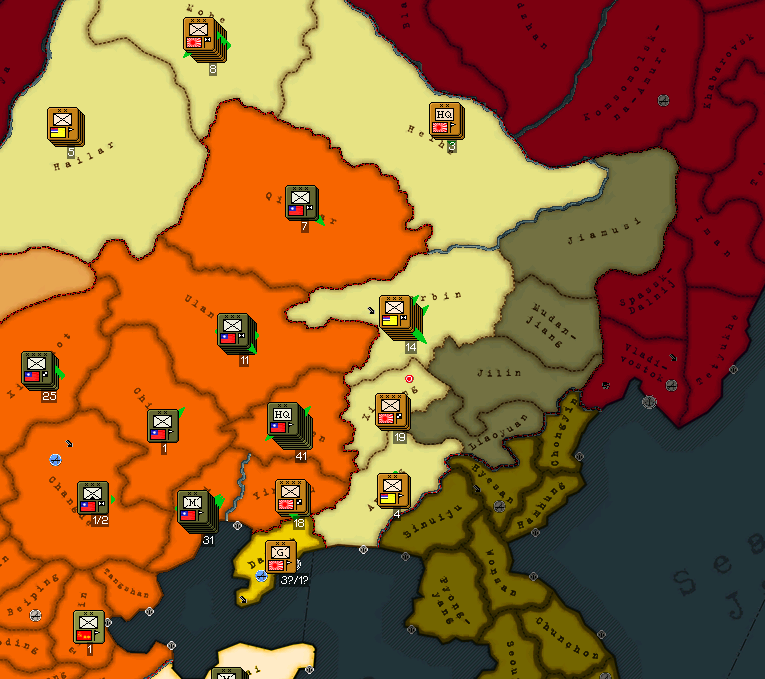
On January 1, 1939, the lines had changed very little. The only changes were the Chinese taking possession of Hailar in the north and the important port and airstrip in Dalian. The Chinese forces began to attack the city of Harbin. They were successful in taking the city, but the victory was shortlived. The Japanese counterattacked and took control back.
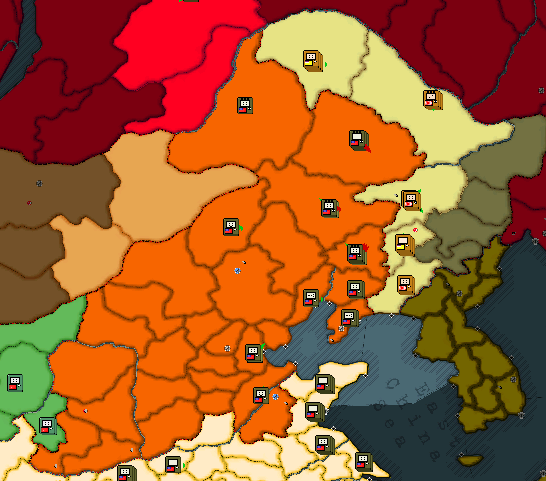
However, over the course of the next few months, Harbin continually changed hands. Every few weeks an attack was launched on the city and it changed hands many times. By the end of March, the Chinese were finally successful in taking the city. With the fall of Harbin, Chinese forces continued east, reaching Mudanjiang along the Soviet border. A large number of Japanese and Manchurian forces became trapped in northern China.

The Manchurian government collapsed in early April. The capital, Xingjing, fell to Communist forces and a peace treaty was negotiated between the two sides. Manchukuo accepted total defeat, and was annexed by the Chinese Communists. As a sign of goodwill, soldiers in the Manchurian army were allowed to surrender peacefully and returned to their hometowns. Despite the fall of Manchuria, the Japanese continued to fight on.

During the summer, the Communists reached the Yalu River. This marked the end of Manchuria and the start of Korea. By now the Japanese forces were begining to crumble and the Chinese quickly advanced down the peninsula. A large force of Japanese soldiers took up positions in Chongyin, causing a major problem for the Chinese forces. With the fall of the rest of the peninsula, the Japanese in Chongyin were the last holdouts. After many months, the Chinese were finally victorious and took possession of Chongyin on September 9. With this defeat, the Japanese had now lost all their possessions on mainland Asia.
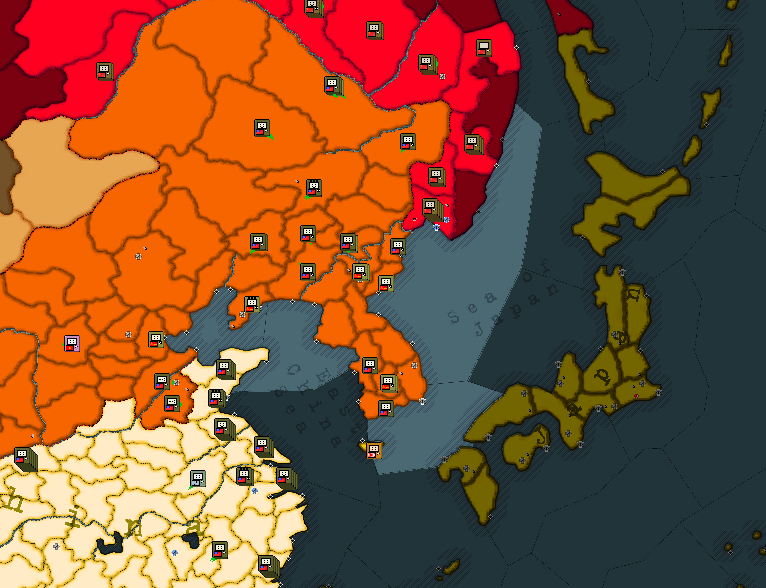
With the capture of Korea, the Chinese set up a new puppet state. After many long years of Japanese colonial rule, the Korean people now had a new state of their own. The People's Republic of Korea ruled the entire peninsula. The island of Cheju, traditionally a part of Korea, was still under Japanese occupation. The new Communist state was led by Kim Il-Sung, and loyal to the Chinese Communists.
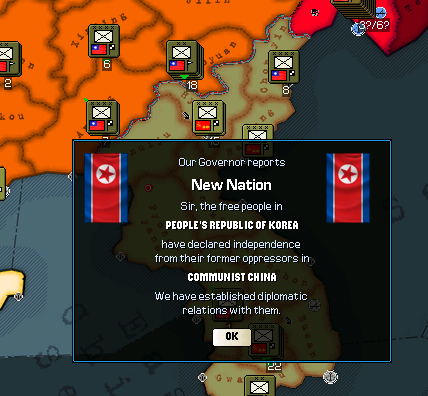
Finally, the new map of Asia. The IC of Communist China has more than doubled, and is now competitve with that of the Nationalists.

The funny thing is, the Nationalists actually did most of the fighting for me.

They took most of Manchuria, and all I really did was beat up the last remaining Japanese in Korea and support some of their attacks.

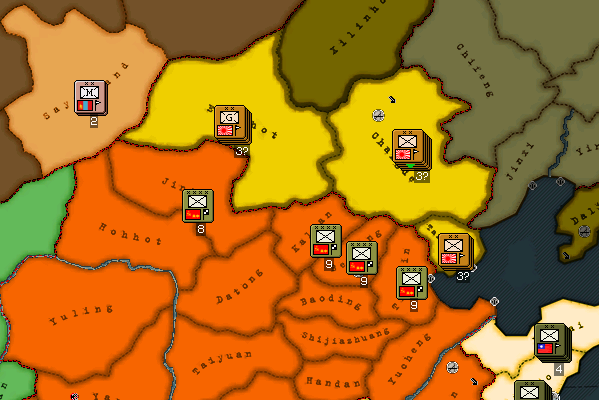
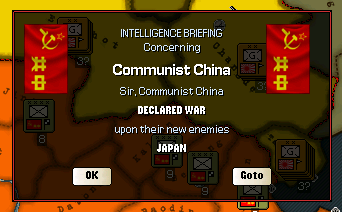
 )
)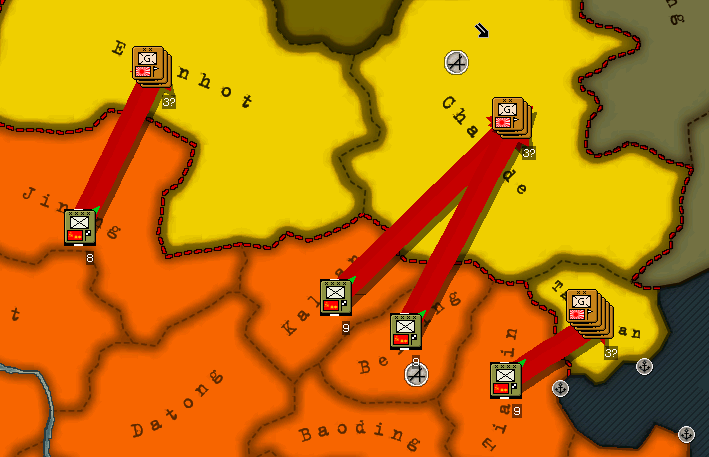
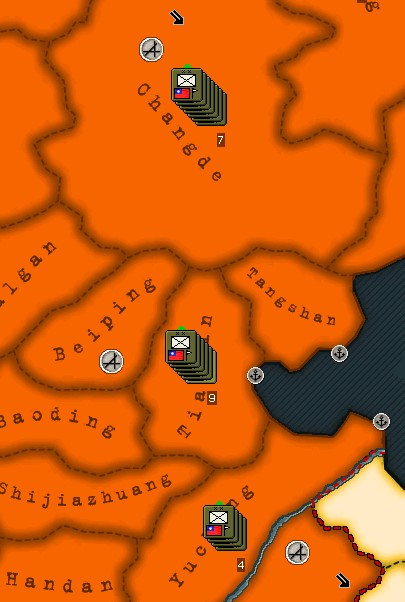









 They took most of Manchuria, and all I really did was beat up the last remaining Japanese in Korea and support some of their attacks.
They took most of Manchuria, and all I really did was beat up the last remaining Japanese in Korea and support some of their attacks.